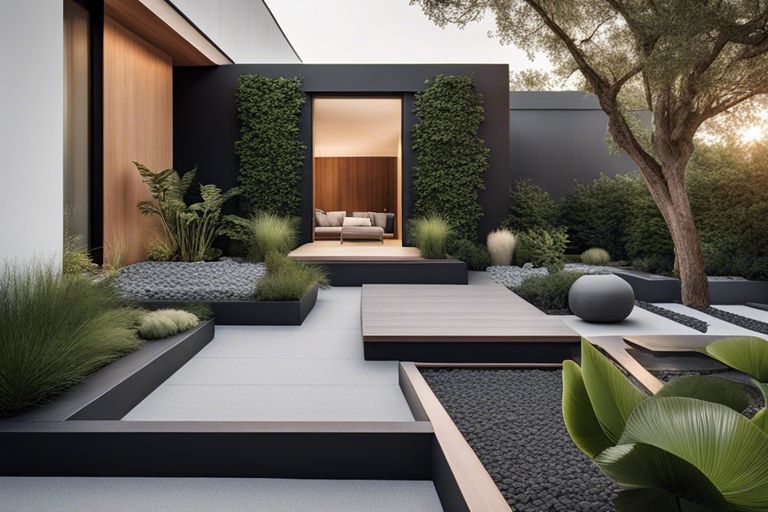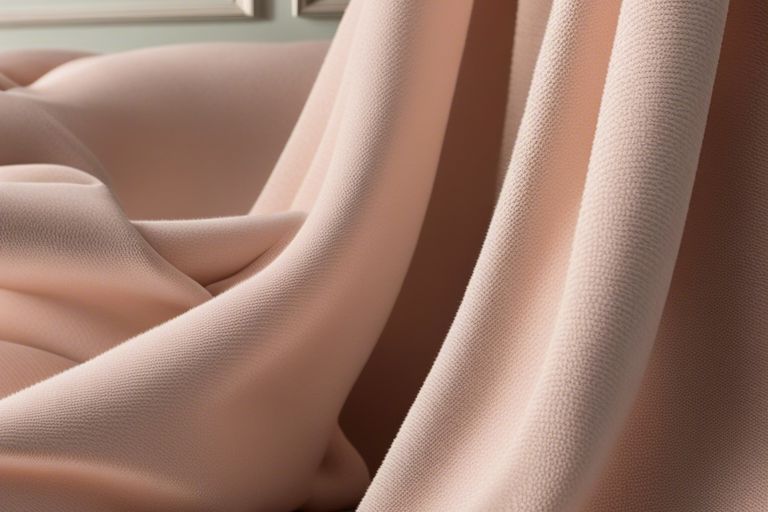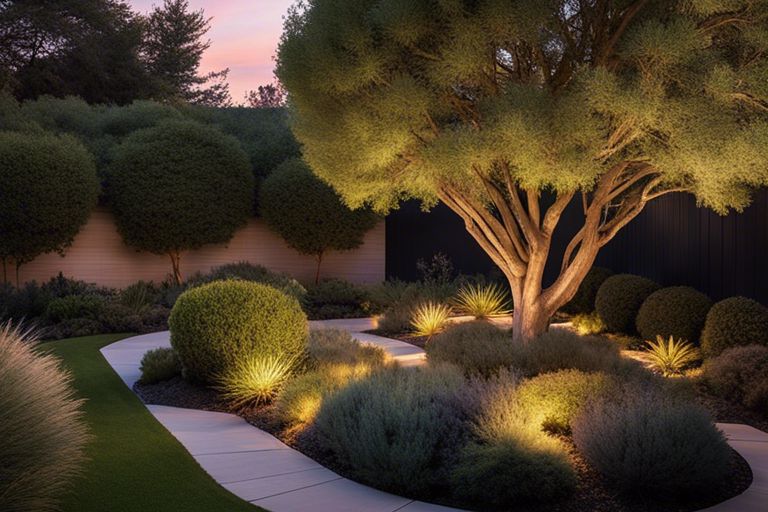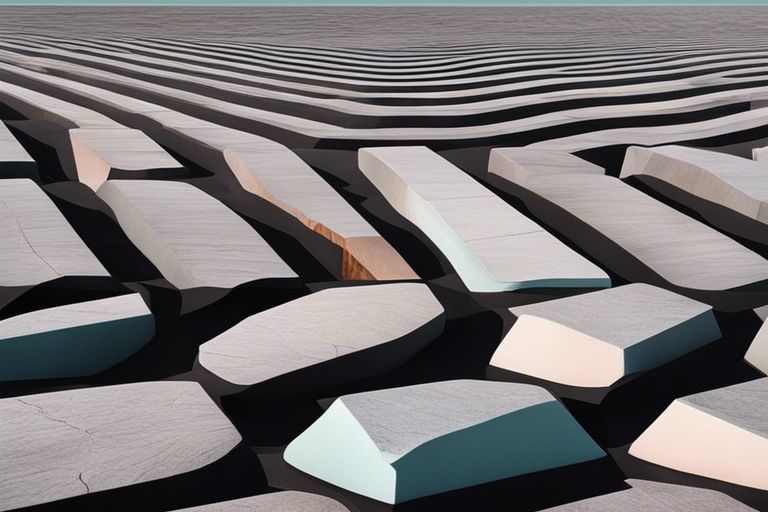There’s an undeniable charm in the use of charcoal rock for landscape design that can genuinely transform your outdoor space into a modern oasis. Its rich, dark hues and textured surfaces bring a contemporary flair while remaining grounded in nature’s elegance. By incorporating charcoal rock into your garden or pathway, you’re making a bold choice that speaks volumes about your taste. Discover how this versatile stone can enhance your landscape and inspire you to create a striking and sophisticated outdoor environment that stands the test of time.
Key Takeaways:
- Versatile Aesthetic: Charcoal rock offers a contemporary look that can seamlessly integrate into various landscape styles, enhancing both modern and traditional designs.
- Durability: As a sturdy material, charcoal rock provides longevity and withstands harsh weather conditions, making it a practical choice for outdoor settings.
- Color Contrast: The dark tones of charcoal rock create striking visual contrast with greenery and other landscape elements, helping to elevate the overall appearance of the environment.
The Unique Appeal of Charcoal Rock
Before delving into the different aspects of charcoal rock that make it an appealing choice for your landscape, it’s important to understand the overall aesthetic and functional properties it possesses. Landscape design is not merely about filling space; it’s a chance to express your personal style, and charcoal rock presents an opportunity to do just that. By leveraging its unique charm, you can transform your garden or outdoor space into a modern wonder that reflects both elegance and creativity.
Its Dramatic Color
For a captivating appearance, few materials can match the dramatic color of charcoal rock. Its deep, rich tones create a striking contrast against the green of your garden and can easily complement a multitude of plants and flowers. This versatile shade not only enhances the visual appeal of your landscape but also adds a touch of sophistication. Imagine the evening light filtering down through the leaves, casting shadows on the uneven surfaces of the charcoal rock—creating a landscape that feels both welcoming and intriguingly modern.
Moreover, with charcoal rock, you can achieve a sense of harmony while embracing a dynamic visual component. When you incorporate this bold color into your landscape stone choices, you invite an element that is both grounding and uplifting, making your outdoor space an inviting sanctuary. Not only does it depict strength and endurance, but it also carries a sense of tranquility, which is an important attribute for any garden space.
Texture and Pattern Variety
Rock your landscape with the distinctive texture and pattern variety that charcoal rock offers. Each piece has its own unique grooves and markings, providing depth and interest to your outdoor areas. Whether you’re aiming for a rustic look with rough edges or a sleek design with polished surfaces, charcoal rock adapts perfectly, matching your desired aesthetic. You’ll find that the interplay of organic shapes can dramatically alter the feel of your garden, creating focal points or seamless transitions between different areas.
Understanding the importance of texture in your landscape can elevate your design significantly. When you select charcoal rock, you’re not just choosing a color; you’re investing in a material that presents an array of tactile experiences. From the smooth touches of river-worn stones to the jagged intricacies of fractured pieces, the varied textures invite exploration. This diversity in patterns means your landscape will never appear flat or monotonous, allowing you to play with light and shadow as the sun travels across the sky. By thoughtfully integrating different textures into your design, you’re ensuring that your space invites curiosity and appreciation from anyone who steps into your garden.
Benefits of Using Charcoal Rock in Landscaping
Any savvy landscaper will appreciate the myriad of benefits that come with incorporating charcoal rock into your outdoor spaces. Not only does this striking material enhance the visual appeal of your landscape, but it also contributes to a wide array of practical advantages. With its rich, dark color, charcoal rock can serve as a stylish contrast against vibrant flower beds or lush green lawns, creating an eye-catching backdrop that elevates your garden to new heights. Additionally, its versatility allows for various applications—be it paths, borders, or decorative features—ensuring that you can find the perfect use that complements your specific design vision.
Aesthetic Versatility
Any thoughtful gardener will recognize the importance of aesthetic variety in their outdoor design. Charcoal rock brings a unique geometric texture and depth to your landscape, making it a compelling choice for modern and traditional settings alike. The subtle sheen and varying shapes of charcoal rock can also create dynamic visual interest, whether grouped in clusters, inserted into a single-design pattern, or scattered across your yard. Ultimately, its dramatic color adds a contemporary flair, ensuring that your garden remains stylish and inviting all year round.
Durability and Low Maintenance
Using charcoal rock in your landscaping means embracing a material that’s built to last. Known for its robust nature, charcoal rock can withstand harsh weather conditions, temperature fluctuations, and even heavy foot traffic without losing its striking appearance. This durability translates to less need for replacement or repairs, allowing you to enjoy your garden without the worry of ongoing maintenance. Coupled with its low porosity, charcoal rock resists stains and absorbs minimal water, making cleanup after weather events or spills an effortless task.
A key advantage of using charcoal rock is its resilience. Unlike many other landscaping materials, it does not fade over time or lose its structural integrity, ensuring that once you have crafted your ideal outdoor space, you can expect it to remain beautiful with minimal effort on your part. You’ll find that investing in this timeless stone can free up your time, allowing you to focus on what matters most: enjoying your garden sanctuary.
Environmental Advantages
Environmental considerations are becoming increasingly crucial for those of us who wish to create a sustainable and eco-friendly landscape. Charcoal rock is not only a stylish choice but also an environmentally responsible one. As a material sourced from natural processes, it integrates beautifully into your garden, enhancing biodiversity without disrupting the local ecosystem. Utilizing such natural resources can help maintain soil health and improve drainage, supporting the overall vitality of your garden.
Advantages don’t stop there. By using charcoal rock, you are contributing to reduced soil erosion and heat retention, both vital factors in maintaining a resilient landscape. Its natural dark hue can absorb heat, moderately increasing the temperature of garden beds in cooler climates, benefitting your plants while reducing the need for supplemental heating options. The environmentally friendly nature of charcoal rock makes it an excellent choice for anyone looking to create a beautiful and sustainable landscape.
Choosing the Right Charcoal Rock for Your Landscape
All landscapes have their unique character, and selecting the right charcoal rock is crucial to enhancing that charm. You’ll want to consider a variety of factors that play a role in optimizing your outdoor space. For a deeper understanding of how decorative rocks can transform your landscape, check out this article on 3 Advantages of Adding Decorative Rock to Your Landscape.
Considering Climate and Weather Conditions
On your journey to create the perfect landscape, it’s important to take into account the climate and weather conditions of your area. Charcoal rock can offer a sleek and modern twist, but its effectiveness can vary depending on factors such as heat, moisture, and freezing temperatures. If you live in a particularly sunny environment, for instance, you’d want to monitor how the rock performs in terms of heat absorption and potential fading.
Additionally, in areas prone to heavy rainfall or snow, drainage is a critical concern. You’ll need to ensure that the charcoal rock does not become waterlogged, which can lead to unwanted soil erosion or plant health issues. Choosing the right type of charcoal rock that compliments both your aesthetic vision and your climate will ensure your landscape remains vibrant and functional.
Assessing Soil Type and Drainage
Landscape considerations shouldn’t stop at the surface; it’s paramount that you assess the soil type and drainage capabilities of your landscape. Different types of soil—be it sandy, clayey, or loamy—will interact differently with charcoal rock. For instance, if your soil retains a lot of moisture, you may need to consider how to improve drainage to prevent issues like root rot in your plants.
A thorough understanding of your soil’s characteristics can not only influence the longevity of your charcoal rock but also enhance the vitality of the surrounding flora. Conducting a simple soil test can give you insights into pH levels and nutrient availability, guiding you in selecting the appropriate rock and plants that will work harmoniously in your landscape.
Balancing Color Schemes and Texture Contrasts
Schemes play a vital role in the overall aesthetic of your landscape, especially when incorporating charcoal rock. While its deep, rich color can serve as an eloquent backdrop, you’ll want to make sure it pairs well with other elements in your garden. Consider using colorful perennial flowers or light-hued stone pathways that create a striking contrast against the dark tones of the charcoal rock, resulting in a visually dynamic environment.
Furthermore, think about the textures in your landscape. Rock surfaces can add depth and interest when contrasted with smooth foliage or soft ground cover. Striking the right balance between color and texture ensures that your design remains cohesive and inviting.
Rock selections can also emphasize your personality. Embracing varied materials alongside charcoal, such as warm-toned pebbles or even rustic timbers, will allow you to create a space that tells a story. Your landscape should reflect your unique style while remaining functional and aesthetically pleasing—this balance is key!
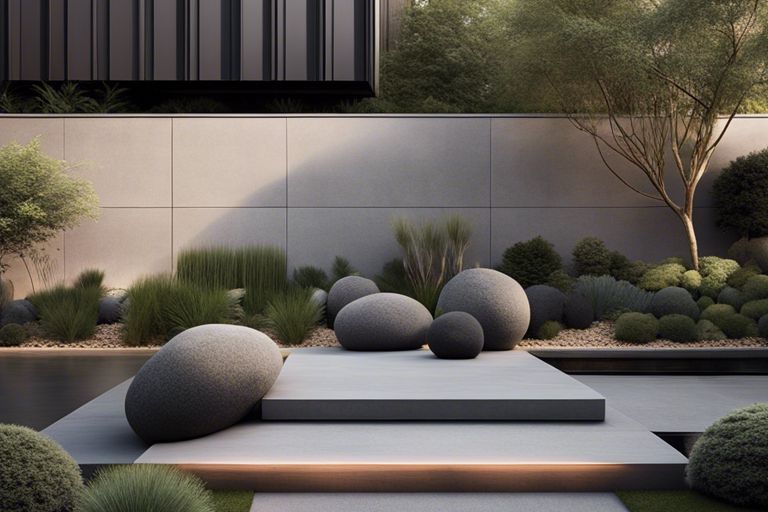
Design Ideas for Incorporating Charcoal Rock
Now, as you commence on your landscaping adventure, consider how charcoal rock can elevate the visual appeal of your outdoor spaces. This striking stone possesses unique characteristics that make it a fantastic choice for modern designs. By integrating it into your landscape, you introduce a sophisticated yet earthy tone that harmonizes beautifully with various plants and materials.
Accentuating Focal Points
Focal points are imperative elements in any garden, drawing the eye and creating interest. You might find that the dark hues of charcoal rock serve to highlight key features in your landscape, such as statement trees, sculptures, or water features. By strategically placing charcoal rock around these areas, you create an attractive contrast that enhances their visual impact.
Focal areas can also benefit from the texture of charcoal rock; its rugged surface adds a natural feel to your design. For instance, using charcoal rock in a gravel pathway leading to a garden bench can guide visitors through your landscape, inviting them to pause and appreciate the beauty around them. Carefully curated placement allows you to embrace the essence of your garden while making bold, modern choices.
Creating Visual Interest with Patterns
Focal points aside, incorporating charcoal rock in various patterns can significantly enhance your landscape’s visual interest. Moving beyond the standard approach, think about using charcoal rock to create geometric designs in patios, walkways, or even garden beds. This method not only emphasizes the natural beauty of your chosen stone but also provides a contemporary twist that is visually captivating.
Understanding the different layouts, such as herringbone, checkerboard, or concentric circles, allows you to showcase your creativity while still benefiting from the durability of charcoal rock. Experimenting with varying sizes and shapes can create a rhythmic flow throughout your yard, adding depth and dimension. The interplay of light and shadow on the dark surface can also produce stunning effects, particularly during golden hour.
Blending with Other Materials for a Unique Look
Accentuating your charcoal rock with complementary materials can lead to truly stunning results. Consider incorporating wood, metal, or even glass elements alongside your stone selection. For instance, the organic warmth of natural timber could contrast attractively with the bold, dark tones of charcoal rock, bridging your landscape’s earthy and modern aspects. Fixtures such as metal planters or corten steel borders can enhance the overall aesthetic, providing edginess that pairs well with the stone’s texture.
Incorporating different materials sets the stage for adventurous combinations. Think about a charcoal rock pathway flanked by vibrant flowering plants in a galvanized metal planter. The synergy between the smooth metal and the rough texture of charcoal rock can create an eye-catching visual dynamic that speaks of both nature and modern design.
Practical Considerations for Working with Charcoal Rock
Keep in mind that while charcoal rock can provide a stunning aesthetic to your landscape, there are practical considerations to take into account to ensure your project runs smoothly and is sustainable.
Sourcing and Purchasing High-Quality Materials
Sourcing the right charcoal rock begins with finding a reputable supplier. Ideally, you want to make sure that the materials are both high-quality and ethically sourced. Look for local quarries or stone suppliers that are known for providing natural stone products, and don’t hesitate to ask about the origins of their materials. Visiting the supplier in person can allow you to inspect the rock’s color, texture, and integrity before making a commitment. This ensures not only that you are happy with your purchase but also that you are getting the best value for your investment.
When purchasing, consider buying in bulk if you’re planning a large project. This can often save you money and guarantee that you receive matching tones and textures, creating a cohesive appearance in your landscape. Before placing your order, it’s worthwhile to reach out to professionals or read reviews to gauge the quality of the stones and the reliability of the supplier. Keep in mind, the quality of the rock will directly affect the success of your project.
Preparing the Site for Installation
Considerations for preparing your site thoroughly are pivotal. Begin by assessing the area where you plan to install your charcoal rock features. Remove any existing plants, debris, or obstacles that might hinder your design. Depending on the scope of your project, you may also need to level the ground to create a stable base for your rocks. This will not only prevent shifting but also help in maintaining the aesthetic look you’ve envisioned. Be sure to check the drainage in the area as well; you don’t want water to pool around your rocks, which can lead to erosion over time.
Another important step is to mark out your design properly. You can use stakes and string to outline the shape and area that the charcoal rock will cover. This visual aid will help you visualize the layout and enable you to make adjustments before installation begins. If you plan on using the rocks for retaining walls or borders, it’s necessary to dig down slightly to lay a solid foundation. Taking the time to prepare your site will pay off significantly when it comes to the longevity and appearance of your landscape features.
Installing and Maintaining Charcoal Rock Features
On installation day, make sure you have the right tools and equipment on hand. It’s wise to have a friend or neighbor help you, as the rocks can be heavy and cumbersome. Begin by laying the largest stones first as these will form the backbone of your design, and fill in with smaller rocks to create balance and texture. Take a step back from time to time to get a good look at your work, ensuring that the layout matches your initial vision. Consider using landscape adhesive in areas where stability is compromised, especially if you are building walls or creating stepped areas.
It’s important to know that maintenance of your charcoal rock features will also play a role in their longevity. Regularly check for any shifting stones or eroding ground around the rocks. A gentle rinse with a hose can help maintain their appearance, as dirt and debris can dull their natural beauty over time. If you notice any moss or algae growth, a simple scrub with a soft brush in combination with a mild cleaning solution should suffice. Keeping maintenance schedules in mind ensures that your beautiful charcoal rock features continue to enhance your landscape for years to come.
It is recommended to take preventive measures by applying a protective sealant that can ward off staining and fading. This extra care will not only enhance the rocks’ appearance but also prolong their life, allowing your landscape to exude modern elegance with minimal effort.
Overcoming Common Challenges and Misconceptions
To truly embrace the potential of charcoal rock in your landscape, it’s paramount to address the common challenges and misconceptions that may arise. Whether you’re concerned about aesthetics or the practical aspects of durability, understanding these factors will empower you to make informed decisions. Embracing the modern flair of charcoal rock can indeed transform your outdoor spaces when you navigate these hurdles with knowledge and confidence.
Addressing Concerns about Color Fading
With the vibrant hues of charcoal rock, you may wonder about the longevity of its striking appearance. Many people mistakenly believe that this rich color will easily fade under sun exposure. While it’s true that some landscape materials can lose their luster over time, charcoal rock is specifically known for its exceptional resistance to color fading. The mineral composition of this material provides a resilient barrier against the elements, allowing its dark tones to withstand harsh weather and direct sunlight for years to come. By choosing high-quality charcoal rock, you can ensure that your landscape will maintain its contemporary charm without frequent replacements.
Debunking Myths about Charcoal Rock’s Durability
Overcoming doubts about the durability of charcoal rock is vital for any prospective user. There is a common misconception that decorative stones are not as sturdy as conventional landscaping options, which can lead to hesitance when selecting materials for a long-lasting landscape design. However, charcoal rock is exceptionally durable, capable of withstanding heavy foot traffic, extreme weather conditions, and all of nature’s whims. In fact, many homeowners appreciate how well it holds up over time, affirming its position as not just an aesthetically pleasing choice but also a practical one.
Rocks like charcoal rock are often subjected to rigorous testing in various environmental conditions, where they have consistently shown their ability to resist chipping, cracking, and other forms of wear and tear. This durability can make it an ideal choice for both hardscaping elements around your garden and accent pieces within your landscape design, ensuring you have a resilient installation that beautifully showcases your unique style.
Troubleshooting Installation Issues
Addressing installation issues can often feel daunting, especially when working with a new material like charcoal rock. You might be concerned about how to maintain an even and secure placement, or how to ensure that the rocks integrate harmoniously within your existing landscape. The key to a successful installation lies in proper preparation and technique. Using a stable base and employing reliable methods will provide you with a solid foundation to work with, allowing the aesthetic beauty of charcoal rocks to shine through without any hiccups.
About ensuring a smooth installation, be mindful that adequate planning can prevent most complications. Prepare the area by clearing debris, leveling the ground, and properly wetting the soil if necessary. This attention to detail will promote stability and minimize issues while laying your charcoal rocks. Additionally, consider consulting instructional resources or professionals if you’re uncertain, as they can provide valuable insights tailored to your specific landscape requirements.
To wrap up
With these considerations, you’ll find that incorporating charcoal rock into your landscaping can truly elevate the overall aesthetic of your outdoor space. This versatile and contemporary stone choice not only complements various flora and design elements but instills an undeniable modern flair to traditional landscapes. Its unique texture and striking hue enable you to play creatively with contrasts, bringing depth and character to your garden or patio. Imagine your vibrant plants set against the bold background of charcoal rock, creating an inviting atmosphere that reflects both nature and modern design trends.
Moreover, charcoal rock offers practical advantages alongside its visual appeal. It is durable and weather-resistant, ensuring that your landscape remains stunning throughout the seasons without significant upkeep. By thoughtfully integrating this contemporary stone into your design choices, you can create a landscape that resonates with a sense of balance and harmony. So, whether you’re looking to redefine your garden or simply add an edgy touch to your outdoor spaces, charcoal rock can be the perfect catalyst to transform your vision into a reality.
Q: What is Charcoal Rock and what makes it different from other landscape stones?
A: Charcoal Rock is a type of decorative stone that features a deep gray to black color, reminiscent of charcoal used for grilling. Its unique hue sets it apart from traditional landscape stones, which often come in earth tones or lighter shades. Charcoal Rock is not just visually striking; it also offers excellent versatility in landscaping projects, serving as a modern accent for gardens, pathways, and patios. Its modern aesthetic gives any outdoor space a sleek and sophisticated look, making it a popular choice among contemporary landscape designers.
Q: How can I incorporate Charcoal Rock into my landscaping design?
A: There are numerous ways to incorporate Charcoal Rock into your landscaping design to achieve a modern twist. You can use it as a decorative ground cover to create a striking contrast against vibrant flowers and plants. Consider laying Charcoal Rock along pathways or driveways for an eye-catching effect. Additionally, it can be utilized in retaining walls, in decorative planters, or as a border for garden beds. Its clean lines and uniform color make it an excellent choice for minimalist and contemporary garden themes.
Q: Is Charcoal Rock eco-friendly and sustainable for landscaping?
A: Yes, Charcoal Rock is a sustainable landscaping choice. Since it is sourced from naturally occurring materials, it requires minimal processing compared to other decorative stones, which may involve substantial quarrying or manufacturing. Furthermore, using landscaping stones like Charcoal Rock can help reduce water usage by decreasing soil erosion and retaining moisture when used in garden beds. When properly sourced, Charcoal Rock contributes to a more environmentally friendly landscape design, promoting sustainable gardening practices.
